Who’s ready to give our new short course a try?
The ball gets rolling May 1 at The Sand Creek Course at French Lick Resort — a 9-hole course created completely in-house by the agronomy team at our neighboring Pete Dye Course.
Before you come play a round, follow along hole-by-hole with our golf superintendent Russ Apple with a hole-by-hole breakdown and the sources of inspiration borrowed from some of the favorite features at our other resort courses.
Let’s head out on the course, starting with ….
Hole #1 (76 yards)
“The idea behind Sand Creek is when golfers come here to play Pete Dye, they might drive by look at it and think, ‘What is that place?’ Then they go get their friends and they come down at night and play with all their buddies, and then the next morning they bring their family and their kids can play it, too. With that thought in mind, that’s what we wanted to design here: a lot of nice, short, chip/putt holes that any golfer can come and enjoy, getting their feet wet trying to play some golf.
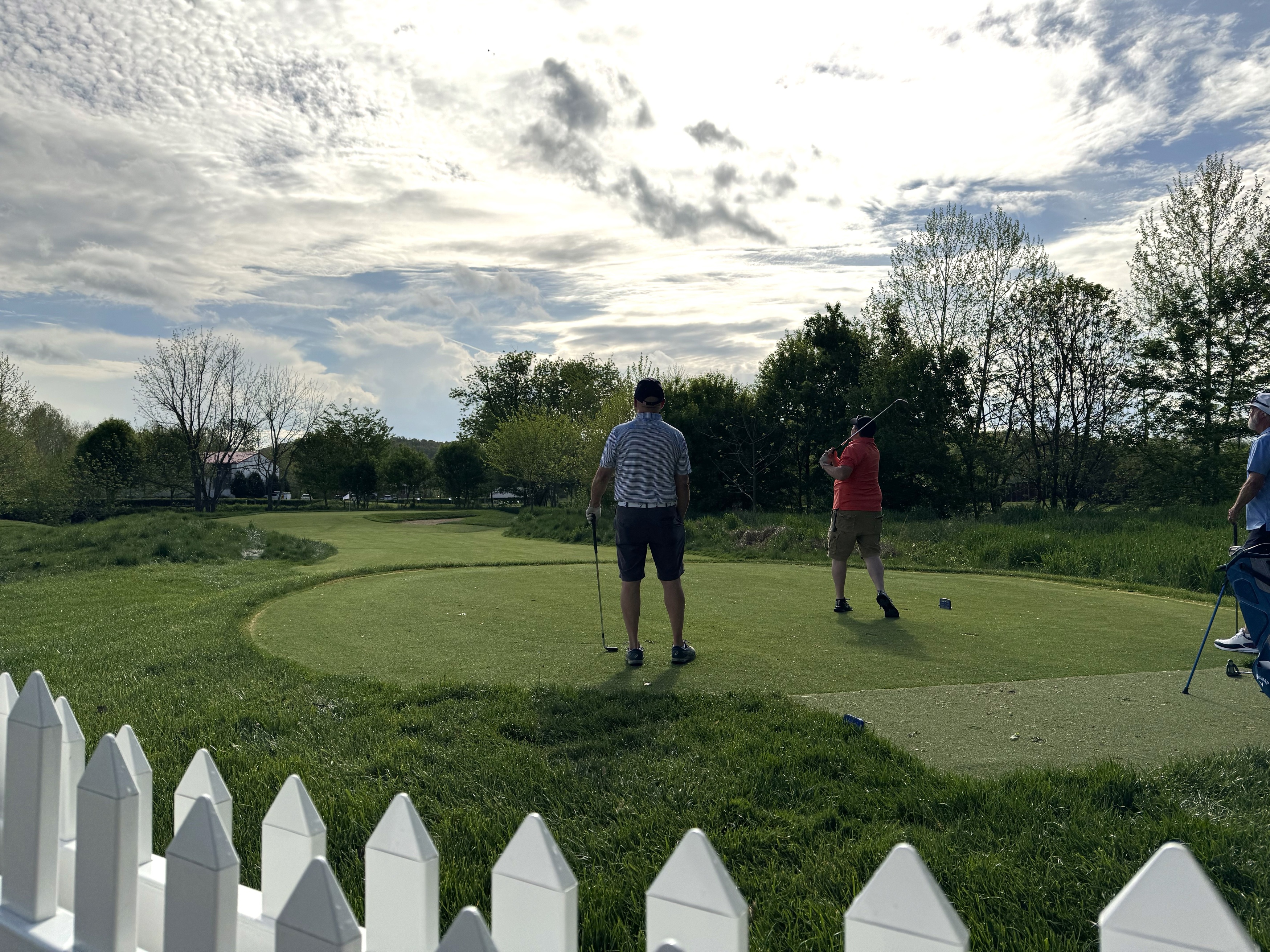
Here on Hole #1 there used to be a putting green, kind of in the middle of this waste bunker. We took a lot of the dirt and shaped it around and created this short little 76-yard hole. We had to let the shape of the land dictate the design of the hole, so we’ve got the green tucked back in the corner and Sand Creek is winding around back of it. It just seems to fit over here in this little nook. I also wanted to allow people first shot out of the gate, they can hit a low little 5-iron or 7-iron and just poke it up through there and get really close to the green to where you can finish the hole easy.”
Hole #2 (77 yards)
“This one we tried to take some design cues off one of the favorite par-3s of The Donald Ross Course with the cloverleaf green. Also with that we’ve got some inspirational Pete Dye volcano bunkers behind it. Some aesthetic waste bunkers on the right … so here, aim for the center of the green.”
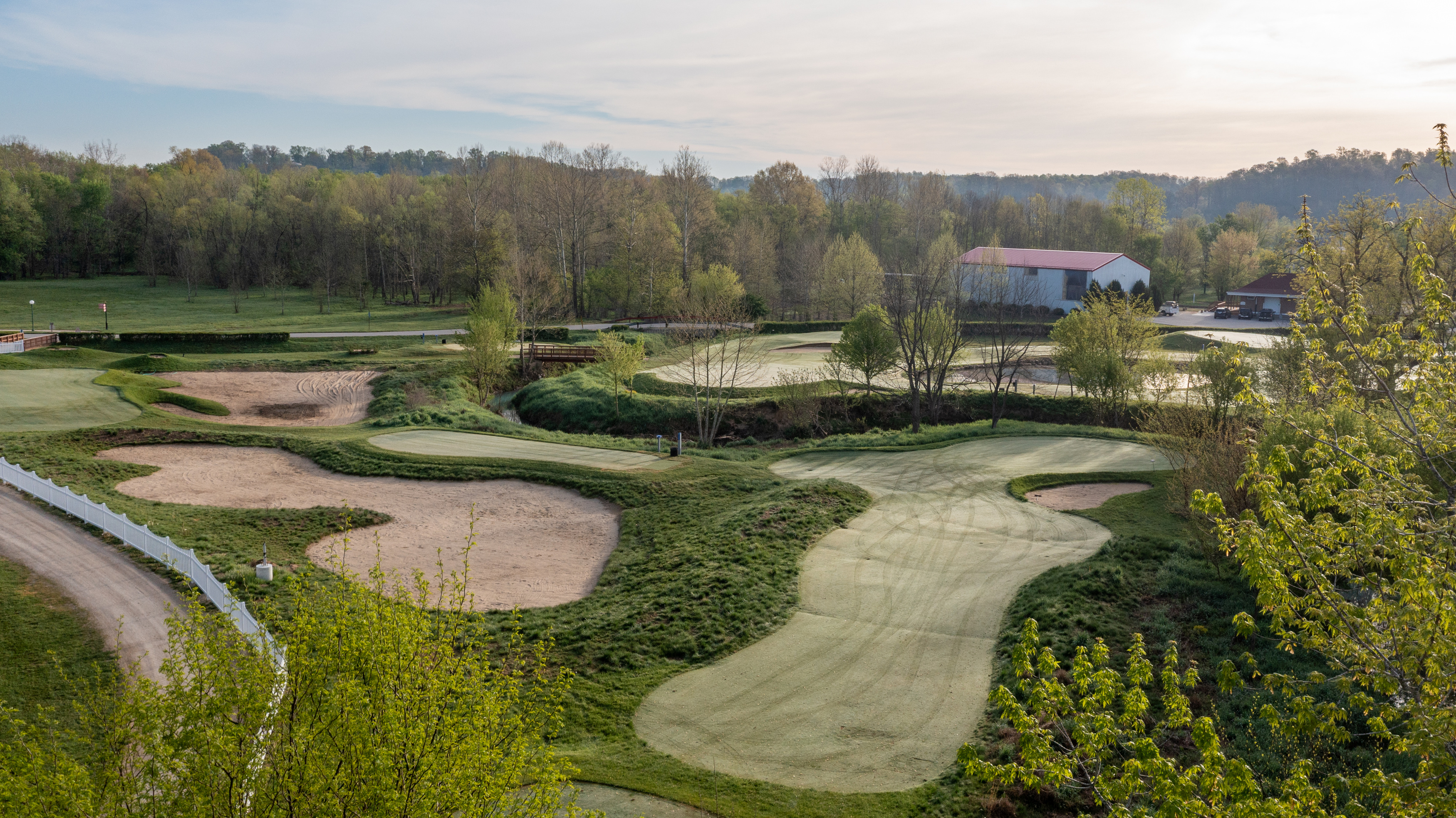
Hole #3 (57 yards)
“A nice, little short shot. But, it can be intimidating. The green is kind of mimicked after the 13th green at the Ross Course, because I vividly remember playing that in high school at Paoli. A double tier green with the rolling features of it, which will come out even more once the green matures.
We threw in a twist with the revetted stacked sod bunker along the right — just because we’ve never built one and we wanted to. And we wanted to give everybody the chance to play out of one. It’s not something you see everyday in southern Indiana, so it gives a different look. It also creates a really cool look, especially in the early morning with the sun. It gives the nice, hard design lines that your eye gets drawn to.”
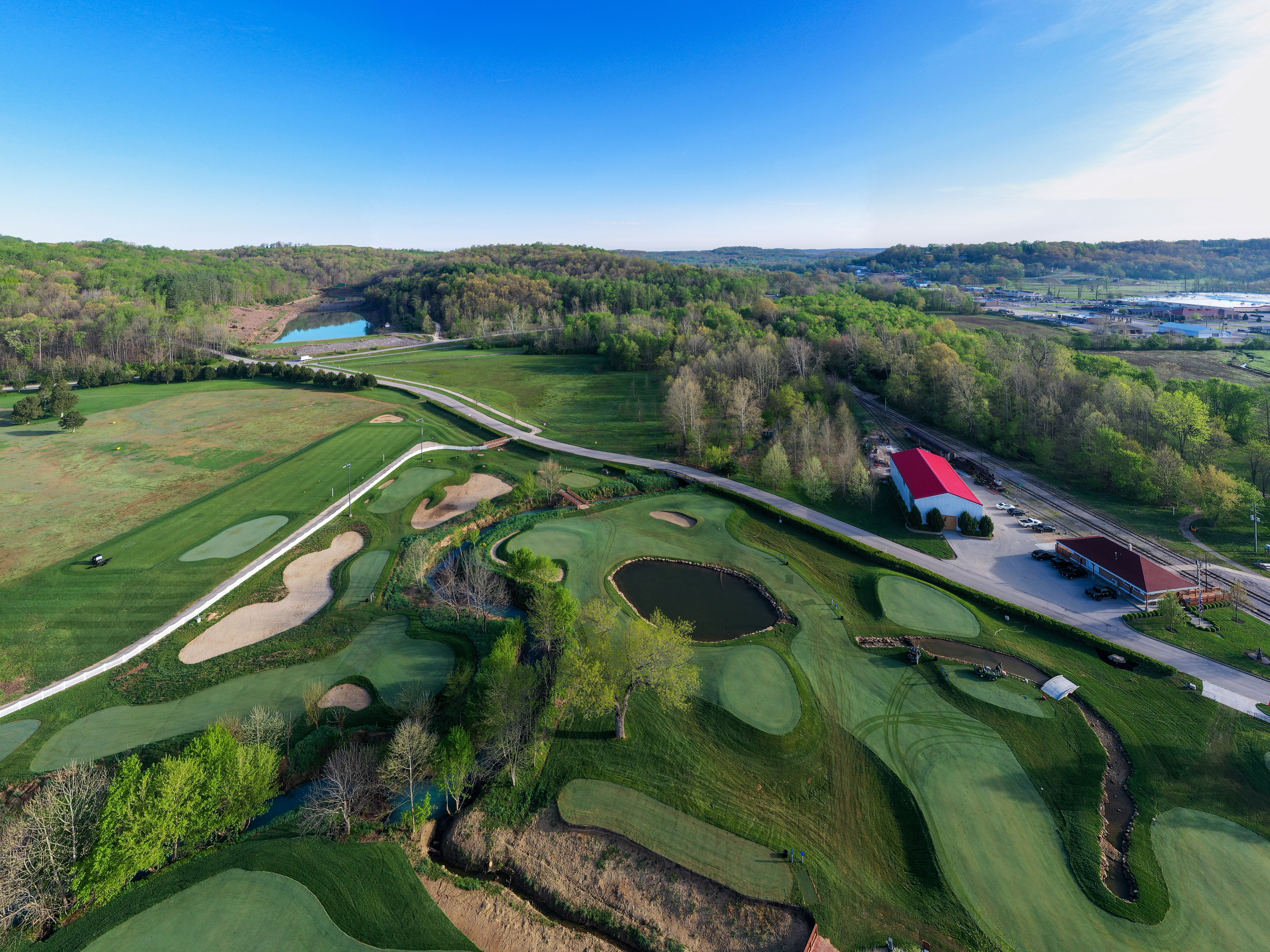
Hole #4 (80 yards)
“We’re on a shared tee box with Hole #6 going the other way. We decided to make this one big flowing hole complex for these next 3-4 holes. It was a bit of a challenge to fit the water feature and have all these holes routed around it, but I think we pulled it off.
This green is paying respect to the green on Hole 12 of the Dye, which is one of my favorite holes with the infinity green. It’s kind of a two-tiered green with a bunker behind the back. If you miss the ball right you’ve got kind of a tricky chip shot up. When the golf course crew is feeling nice, we’ll move the tees up a little bit and it’ll play a lot easier.”
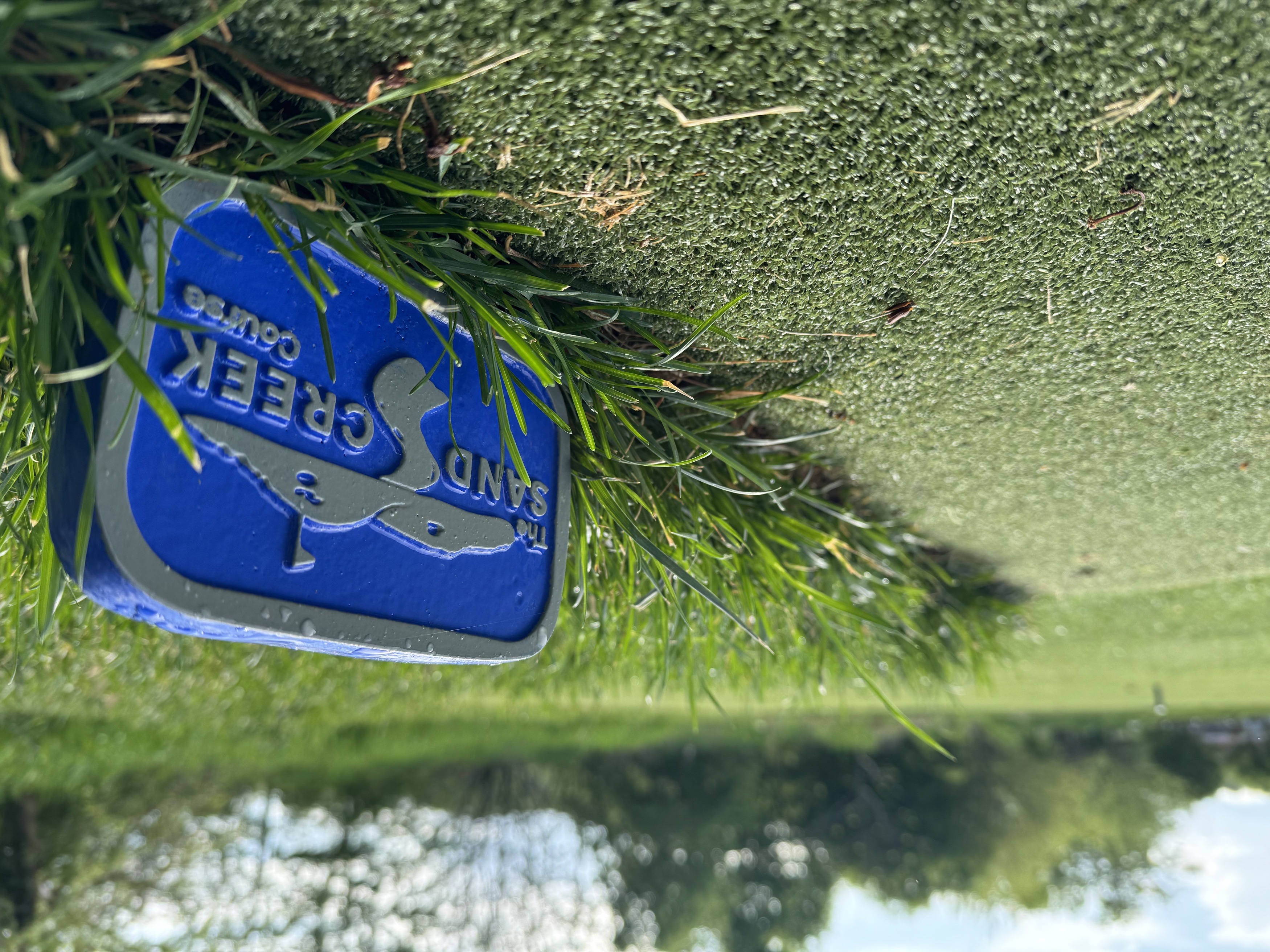
Hole #5 (50 yards)
“This is the easiest hole on the golf course — 50 yards at the longest; it’ll probably play 35-40 on average. This is another reason why I wanted that bentgrass going all the way from tee to green, so if you had to, you could putt this one. You could take a low iron and bump and run it up there, or maybe even putt it — especially if the tees are up farther. In the mid-summer, everything will be tightened up more and rolling even smoother.”
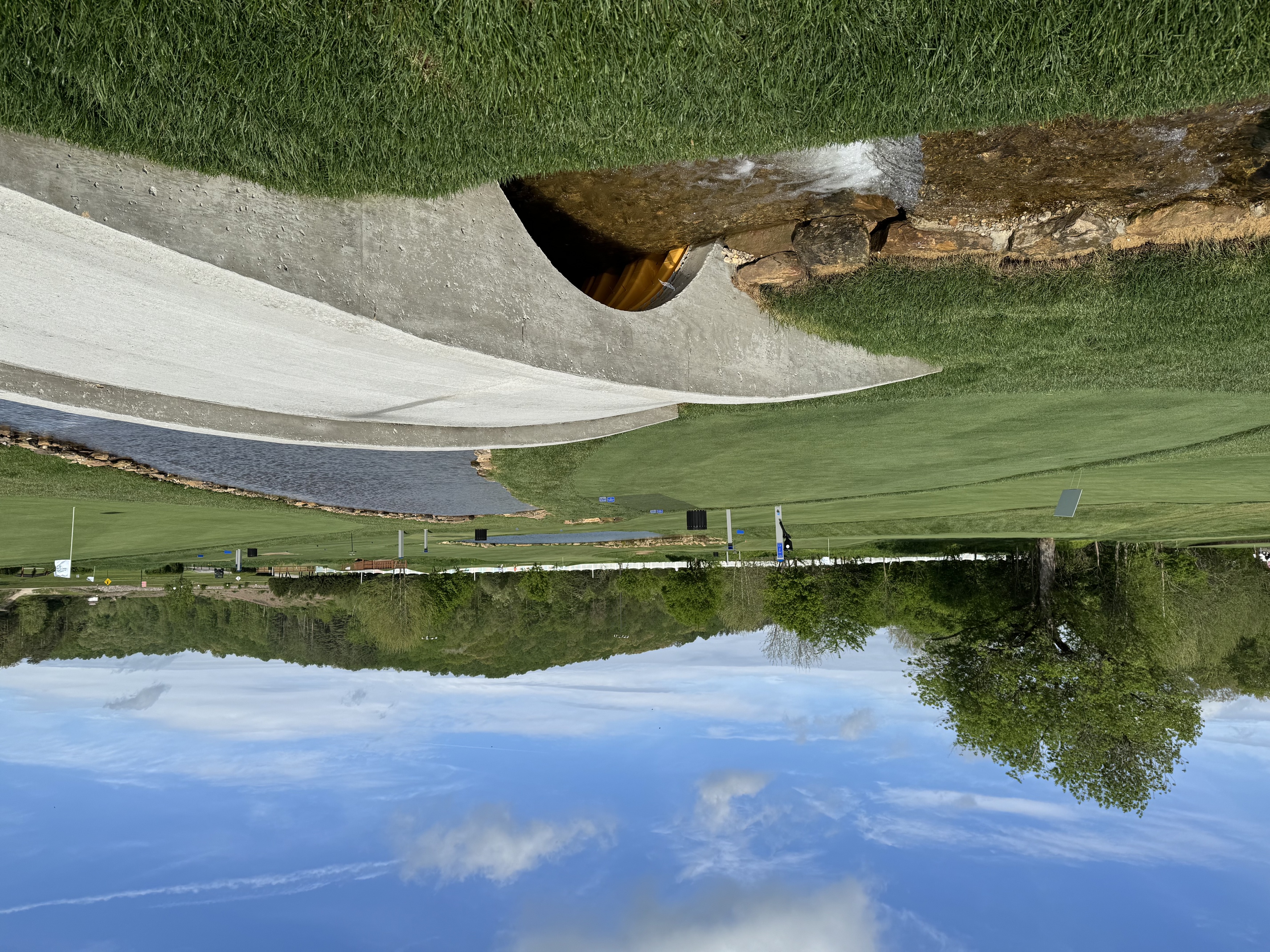
Hole #6 (75 yards)
“Another relatively straightforward, easy hole, straight up the hill. Cutting through the hole is the water feature we put on the golf course, and you can hear it all around you. We’re going to a shared double green with hole 8 that’s up above it. All this water originates from the very top in between both of those greens. Depending on where the pin is, if you’re down here in this lower corner, the hole’s going to play pretty easy. If we’re up here in the back corner where it gets a little steeper, it becomes a little trickier. Roll the ball short, as in a low shot that bounces it up and lands right in the center of the green.”
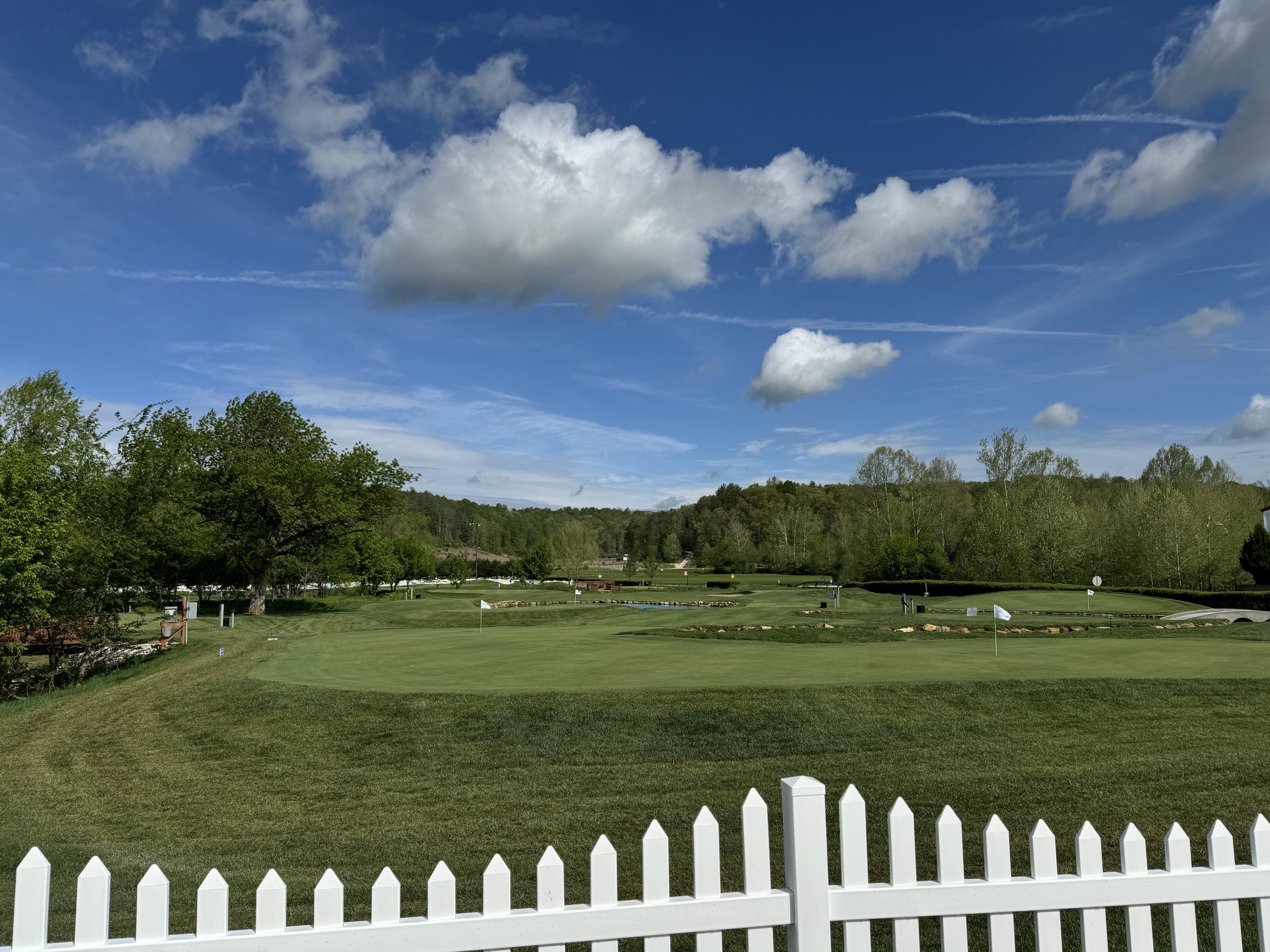
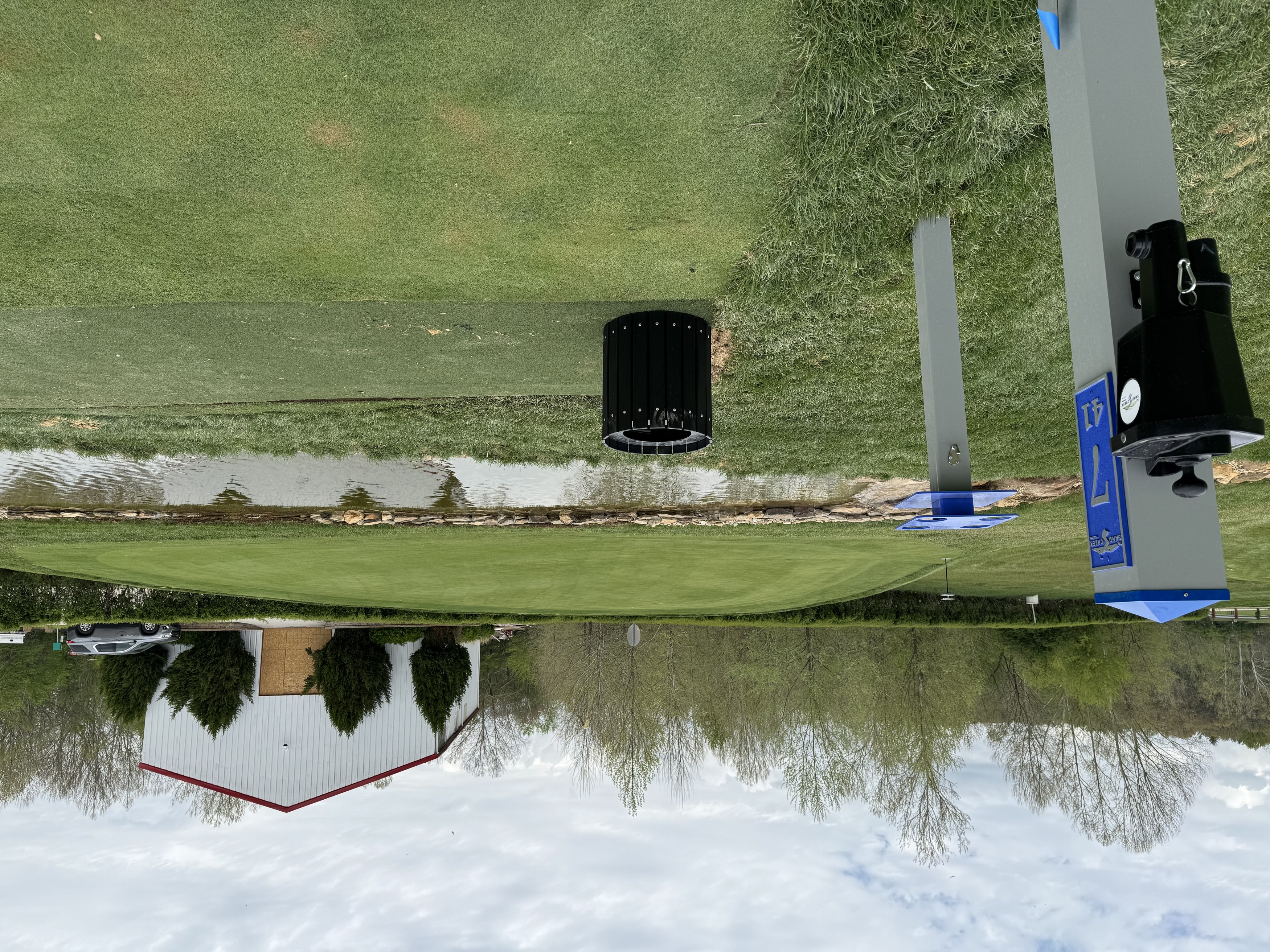
Hole #7 (41 yards)
“The shortest hole on the golf course — but it could be the hardest or easiest, depending on how you play it. I’d say this would be the hole to most likely get a hole-in-one. And it’s the only hole on the course where you have a second chance of getting a hole-in-one, because the green is pitched back so steep that it should roll backward if it goes too far.
We had the slope of the #8 green of the Ross in mind on this one – it’s not quite the same shape, but it is pretty steep just the same.”
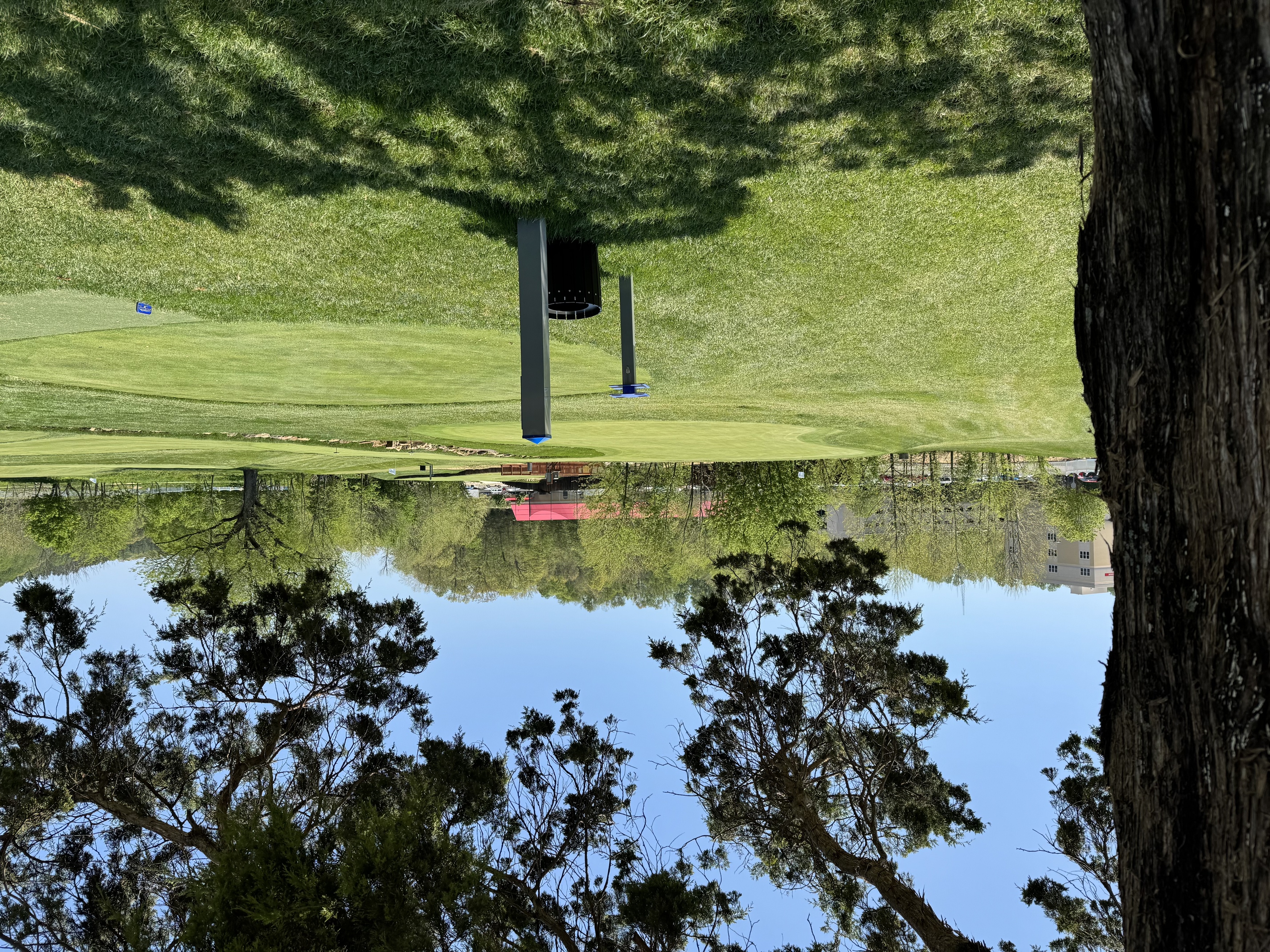
Hole #8 (56 yards)
“If you’ve made it this far, you’re on the home stretch. A short little chip shot to the other part of the shared green (with #6). Pretty long section here on this green; we’ve got quite a bit of variability where to put the pin. You have the water feature that cuts right through between here and 6. This is another good view of the majority of the golf course.
Right back here behind this cedar tree, I’d say that’s my favorite spot on the whole golf course. During the whole (construction) process that’s where we had our job trailer so when we’d come here in the mornings we’d sit here and look at it all; gradually there would be less that needed to be done. It also has a really cool view where you can see the water feature and you can also see the No. 9 finishing hole with the railroad ties in the background.”
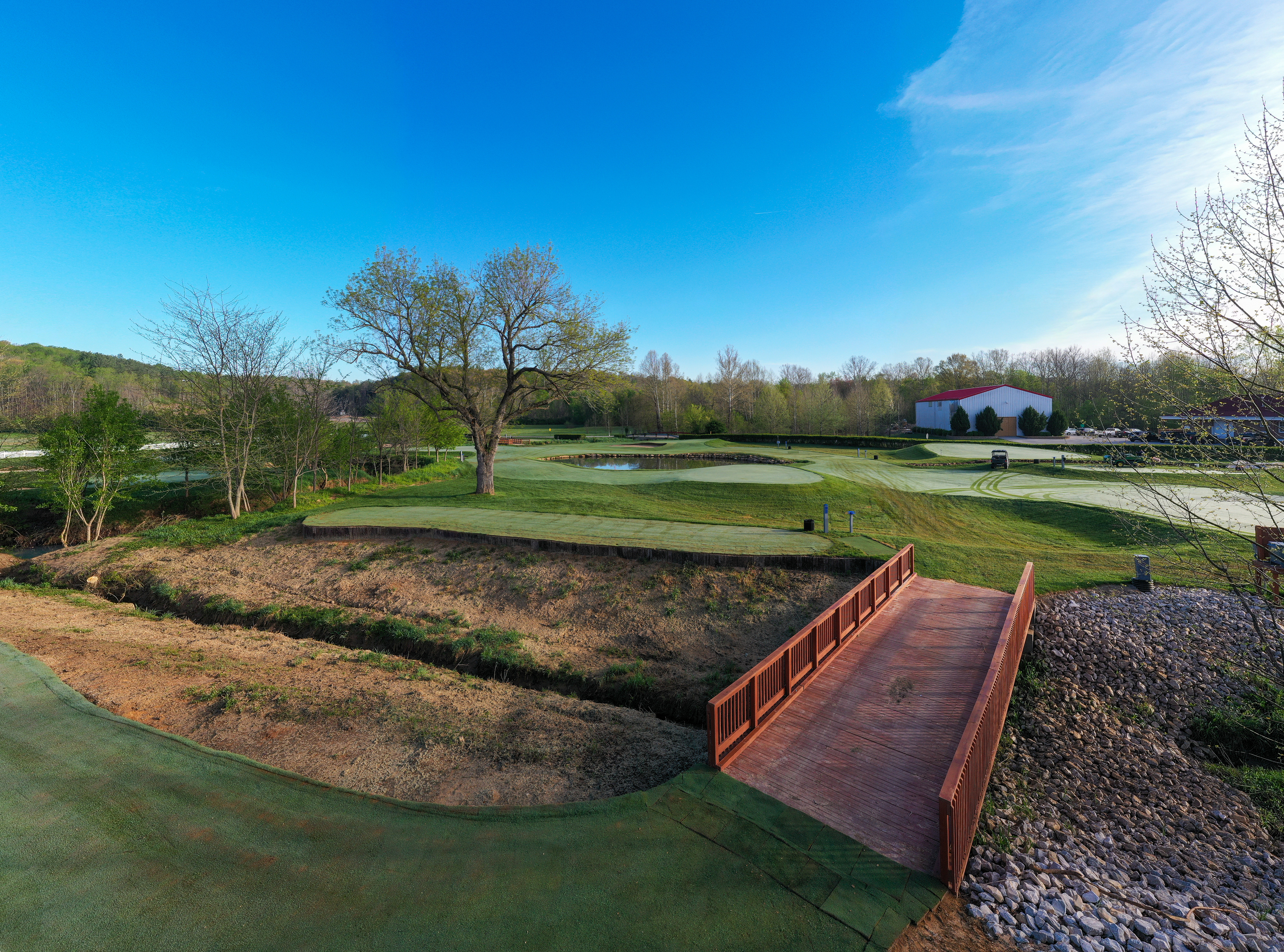
Hole #9 (90 yards)
“We tried to do something a little bit special here. I always liked railroad ties and Pete Dye; it was an architectural feature he was known for using at some of the famous courses he’s done over the years, like Harbour Town and Whistling Straits.
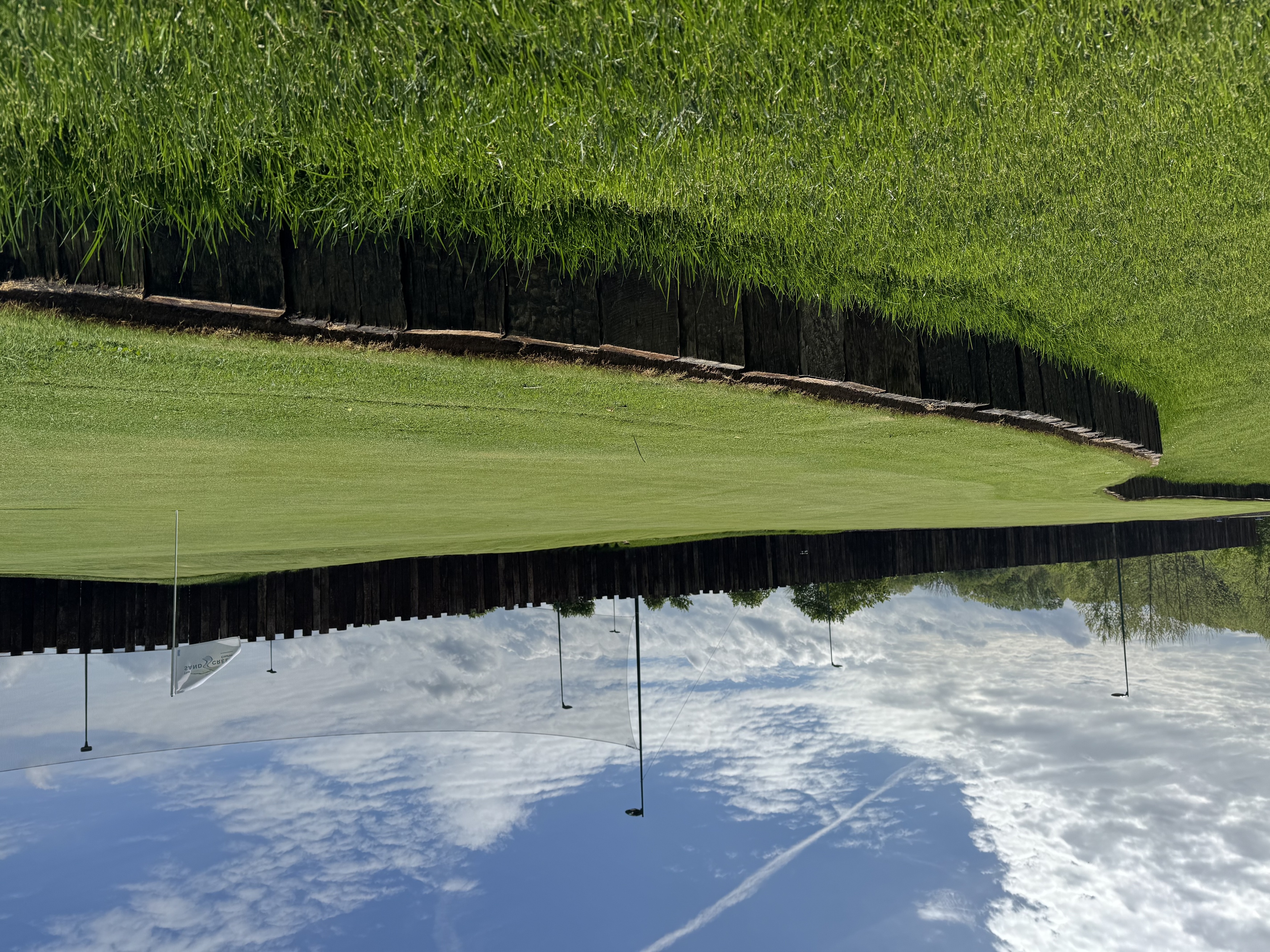
The short ties and the knee wall in front of the green, I thought about the bunkers at Hilton Head Island at Sea Pines. The back wall is inspired by Chris Lutzke, who has built those at lots of places — and he’s actually the guy who built the course here at French Lick for Pete Dye. We wanted to try to put all that together with a big green to finish on – and hopefully we pulled it off.”